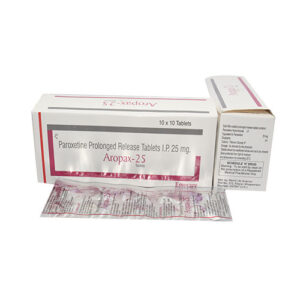Products

FLUOXETINE 10 CAP
XENTIP-10 Cap
Description
Fluoxetine is a medicine that helps with different problems like feeling very sad (depression), strong worries (panic attacks), and doing things over and over (obsessive-compulsive disorder). It also helps with a certain eating problem called bulimia, and a severe form of feeling really bad before a period (premenstrual dysphoric disorder).
This medicine can make you feel better in many ways. It can improve your mood, help you sleep better, make you more interested in things you used to enjoy, and give you more energy. It can also make you less afraid and worried, reduce unwanted thoughts, and lessen the number of panic attacks. If you have habits like washing your hands a lot, counting, or checking things too much, this medicine can help you do them less.
For those who struggle with premenstrual symptoms like being easily annoyed, eating more than usual, or feeling very down, fluoxetine can help with those too. If you have trouble with eating a lot and then getting rid of it (bulimia), this medicine can help you stop doing that so much. Always talk to a doctor before starting or changing any medicine. They’ll tell you how much to take and when to take it.
How to use fluoxetine oral
- Before you start using fluoxetine, read the guide that comes with it from your pharmacist. If you have any questions, ask your doctor or pharmacist.
- Take fluoxetine as your doctor tells you to. Usually, it’s taken once a day in the morning. If your doctor says to take it twice a day, take it in the morning and at noon.
- If you’re taking fluoxetine for premenstrual problems, your doctor might tell you to take it every day or just for the two weeks before your period starts until the first full day of your period. You can mark it on your calendar to help you remember.
- If you’re using the liquid form of this medicine, use a special measuring tool to make sure you get the right dose. Don’t use a regular spoon because it might not give you the correct amount.
- The amount you take depends on how your body is doing and how you’re responding to the treatment. Your doctor might start you on a low dose and then increase it slowly to reduce the chance of side effects. Follow your doctor’s instructions carefully. Take it at the same time every day to help you remember.
- Keep taking the medicine even if you start feeling better. Don’t stop it suddenly without talking to your doctor first. Some conditions can get worse if you stop the medicine abruptly. Your doctor might need to slowly lower your dose.
- You should start to feel a bit better in 1 to 2 weeks, but it might take 4 to 5 weeks before you feel the full benefit.
- If you don’t see any improvement or if things get worse, let your doctor know.
Benefits of fluoxetine
Fluoxetine is a medication that belongs to a class of drugs called selective serotonin reuptake inhibitors (SSRIs). It is commonly prescribed for various mental health conditions. Here are some of the benefits of fluoxetine:
Treatment of Depression: Fluoxetine is primarily prescribed to treat major depressive disorder. It works by increasing the levels of serotonin in the brain, which is believed to improve mood and reduce depressive symptoms.
Treatment of Anxiety Disorders: In addition to depression, fluoxetine is also used to treat various anxiety disorders, including generalized anxiety disorder (GAD), panic disorder, social anxiety disorder, and obsessive-compulsive disorder (OCD).
Panic Disorder: Fluoxetine can be effective in reducing the frequency and severity of panic attacks in individuals with panic disorder.
Bulimia Nervosa: It is approved by the FDA for the treatment of bulimia nervosa, an eating disorder characterized by binge eating followed by purging behaviors.
Premenstrual Dysphoric Disorder (PMDD): Fluoxetine is sometimes prescribed to manage the emotional and physical symptoms associated with PMDD, a severe form of premenstrual syndrome (PMS).
Post-Traumatic Stress Disorder (PTSD): While not a first-line treatment, fluoxetine may be used in combination with other therapies to help manage symptoms of PTSD.
Obsessive-Compulsive Disorder (OCD): Fluoxetine is one of the first-line treatments for OCD. It can help reduce the frequency and intensity of obsessive thoughts and compulsive behaviors.
Other Conditions: In some cases, fluoxetine may be used off-label to treat conditions such as body dysmorphic disorder, binge eating disorder, and certain types of phobias.
Side effects:
Common side effects of this medication may include nausea, drowsiness, dizziness, anxiety, trouble sleeping, loss of appetite, tiredness, sweating, or yawning. If these persist or worsen, inform your doctor.
Remember, your doctor prescribed this medication because they believe the benefits outweigh the risks. Most people using it don’t experience serious side effects.
However, contact your doctor promptly if you experience severe mood changes, thoughts of suicide, unusual bleeding or bruising, muscle weakness, shakiness, decreased interest in sex, changes in sexual ability, or significant weight loss.
Seek immediate medical attention for rare but serious side effects like black stools, coffee-ground-like vomit, seizures, changes in urine output, eye pain, swelling, redness, dilated pupils, or vision changes.





